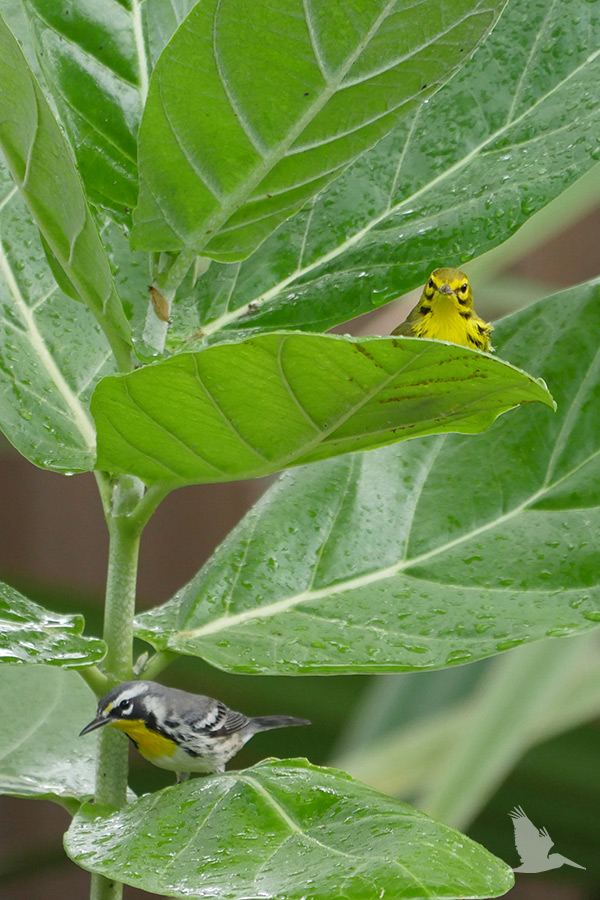The featured birds for September 2023 are a Prairie Warbler and a Magnolia Warbler.

The prairie warbler and the magnolia warbler are small song birds who have two distinct song styles: one to attract females, the other to alert competitors to the boundaries of its territory.
Magnolia Warbler
Species: Setophaga magnolia
Family: Parulidae
Length: 4.3-5.1 in (11-13 cm)
Wingspan: 6.3-7.9 in (16-20 cm)
Weight: 0.2-0.5 oz (6-15 g)Prairie Warbler
Species: Setophaga discolor
Family: Parulidae
Length: 4.3 in (11 cm)
Weight: 0.2-0.3 oz (6.4-8.8 g)
The magnolia warbler spends the breeding season (summer) in Canada and far North East US states and then the winter season in Central America and the Caribbean. Here in Florida and the other Eastern US states, we only get to see the magnolia warbler during migration in spring and fall.
The prairie warbler, which actually lives in second growth forests and not prairie, is also a migratory bird. However, there’s a subspecies of slightly larger non-migratory prairie warblers that live in Florida mangroves. I assume the one that came through my yard was of the migratory species.
You won’t see warblers visiting your bird feeders. But if you grow native trees and shrubs, you have a good chance of seeing them finding food, shelter, and water in your yard.
It felt extraordinarily lucky to see these two different warblers at the same time in my yard last fall. I had just finished watering the giant milkweed pictured, when they flew in to take quick feather baths with the droplets on the leaves. Right after I took this photo, a third warbler, a local palm warbler joined the fun and I captured a short video instead of taking another photo. Nature magic.
2023 St. PetersBird Calendar
Luxurious press-printed monthly poster calendar featuring 13 bird photos by Luci Westphal.